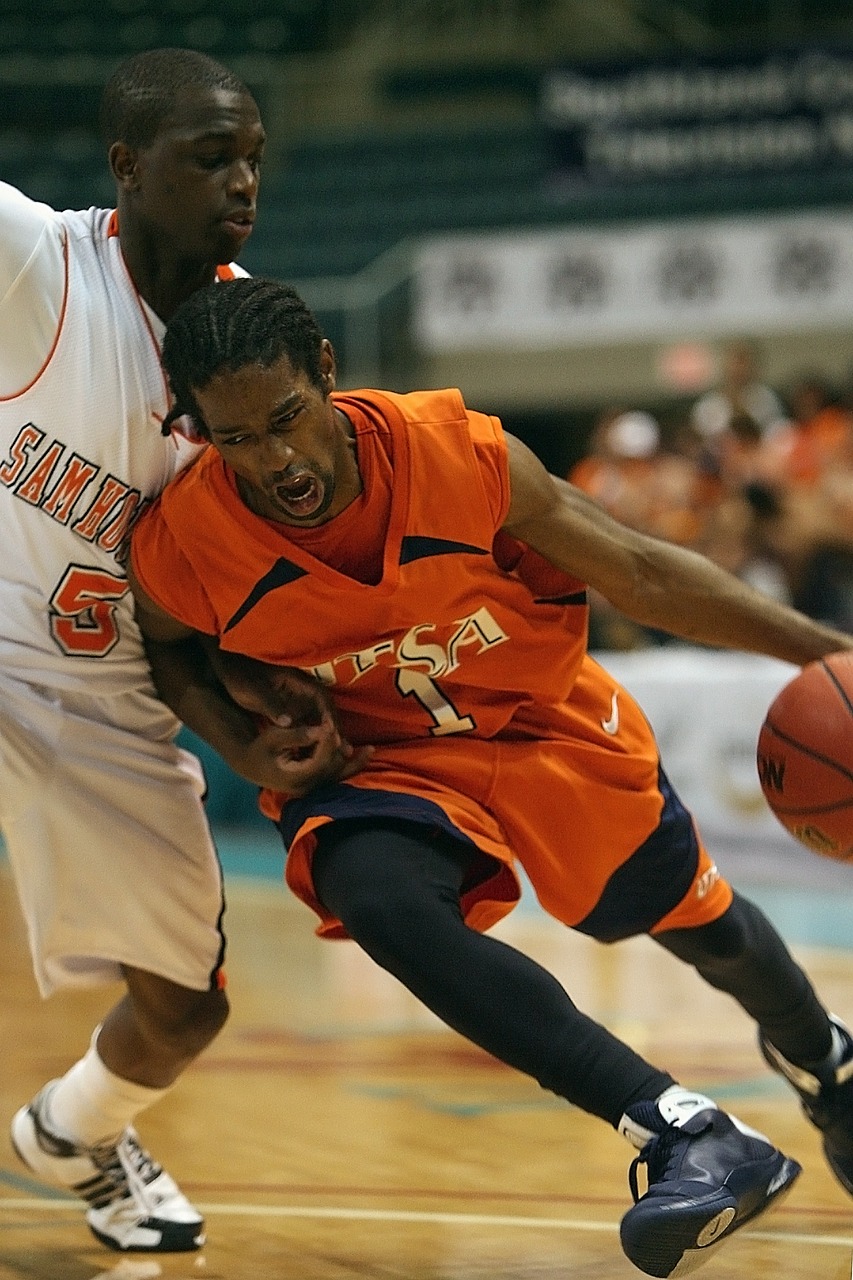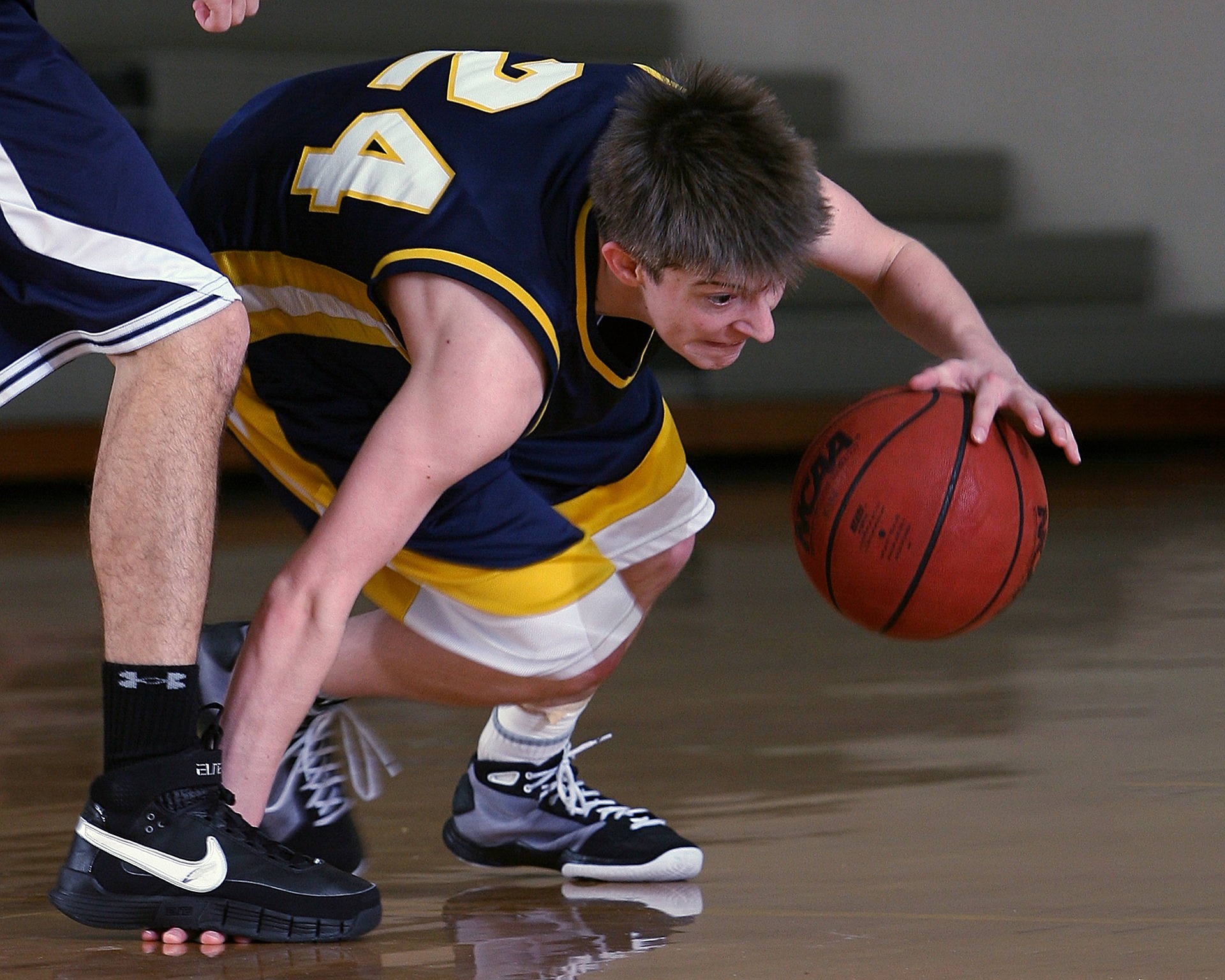Are you wondering what are the different types of passes in basketball?
As a former point guard in organized basketball, there were a number of passes you can throw during a game. You have to choose wisely though, as a bad pass may result in a turnover.
A good pass on the contrary will minimize the turnovers and help position your team to score the basketball.
What Are The Different Types of Passes in Basketball?
The different types of passes in basketball are:
- Chess pass
- Bounce pass
- Skip pass (over the head pass)
- Behind the back pass
- One-handed pass
- No look pass
- Alley-oop pass
- Handoff pass
- Jump Pass
- Football pass
As mentioned in a previous post, one of the basic skills in basketball is passing. The most common passes in basketball are bounce and chess passes. They should be the first ones a player learns before moving on to others, as the others are harder to make.
We will now highlight other passes you can make in basketball and how each pass is made.
Chess Pass
A chess pass is the most common pass in basketball. It is when a player pushes the ball out of their hands and steps through at the same time to deliver the pass. It is important to note that during this type of pass, the ball will not touch the ground.
A chess pass would be completed to get a wide-open player a shot or to simply move it around until someone is open for a shot.
Bounce Pass
Similar to a chess pass, during a bounce pass you push the ball out of your hands and step through. The only difference is that during this pass, the ball makes contact with the ground to reach the other player.
A bounce pass is typically made for the same reasons as a chess pass, but more common when the defender has their hands up and extended. With their hands up, it is harder to make a chess pass, so players use a bounce pass to complete the pass.
Skip Pass (Over-the-head pass)
A skip pass, also known as over the head is when you make the pass from above your head with two hands. The same fundamentals apply where you step through and push the ball out with your two hands.
The idea of a skip pass is to make the pass above the defender’s head for passes that need to travel long distances. A player would make a skip pass when the intended receiver is not one pass away, or within proximity to make a chess pass.
Behind-the-Back-Pass
One of the flashier passes in basketball is the behind-the-back pass. It is when a player loops the ball behind their back with one hand to deliver the pass to its intended target.
A behind-the-back pass is typically made in transition when the defender gets too close. When the defenders get too close, the offense does not have ample space to step through for chess or bounce passes. This makes a behind-the-back pass a great option if your teammate is open.
Behind-the-back passes should be made with caution though, as they are riskier to make and more prone to cause turnovers.
One-handed Pass
A one-handed pass can be completed in the form of a chess or bounce pass. The only difference is that it is completed with one hand. It can be with either hand too, but only hand to be considered a one-handed pass. These types of passes are also considered more flashy and make the highlight reel if completed.
Players don’t typically make one-handed passes unless it is the only way they can complete the pass without making a turnover. They can be difficult with the non-dominant hand, so is not recommended for beginners to make one-handed passes.
No Look Pass
A no-look pass is when a player completes a pass to the intended target without looking at them. No-look passes can be chess or bounce but are also very risky to make and with a high chance of turnover.
Players would make no-look passes to trick the defense into thinking they will pass elsewhere. A no-look pass can be very effective to get players open shots when done correctly.
Alley-oop Pass
An alley-oop pass is when a player passes the ball near the basket and the intended target catches it in the air. Once the player catches it in the air, they can dunk the ball or lay it in.
These are effective passes when you have athletic teammates that can jump high. They can use this to their advantage and catch the ball that others can’t reach.
An alley-oop pass would typically be completed on a fast break or when there isn’t too much congestion near the basket. Alley-oop passes can also be completed off the backboard.
Handoff Pass
A handoff pass is when teammates are next to each other and the player with the ball hands the ball off to the other.
Handoff passes are usually done when the defense is pressuring or used to initiate the offensive play. These passes are one of the safest passes to make, with a low chance of turnover.
Jump Pass
A jump pass is when a player jumps in the air and passes from up top.
This usually happens when the defense is pressuring or is tall. By jumping, the offensive player has a better view and passing angle to deliver the pass. This pass can be risky though. Jumping gives other defenders time to rotate and intercept the pass.
Football Pass
A football pass is when a player passes the basketball, in the form of a football pass.
These are typically made when a pass needs to be delivered the length of the court. These types of passes are very risky to make as they are prone to end up in a turnover. These are usually made when there are very few seconds left, and players don’t have enough time to dribble the ball up the court.




